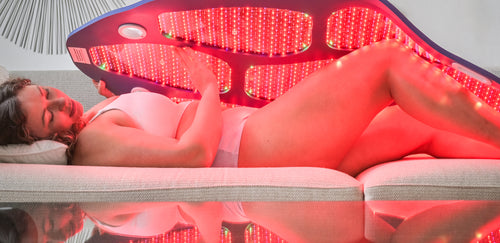stimulate hair growth
reduce inflammation
increase circulation
firm skin
relieve pain
clear breakouts
stimulate hair growth
reduce inflammation
increase circulation
firm skin
relieve pain
clear breakouts
stimulate hair growth
reduce inflammation
increase circulation
firm skin
relieve pain
clear breakouts
stimulate hair growth
reduce inflammation
increase circulation
firm skin
relieve pain
clear breakouts
stimulate hair growth
reduce inflammation
increase circulation
firm skin
relieve pain
clear breakouts
stimulate hair growth
reduce inflammation
increase circulation
firm skin
relieve pain
clear breakouts
stimulate hair growth
reduce inflammation
increase circulation
firm skin
relieve pain
clear breakouts
stimulate hair growth
reduce inflammation
increase circulation
firm skin
relieve pain
clear breakouts
stimulate hair growth
reduce inflammation
increase circulation
firm skin
relieve pain
clear breakouts
stimulate hair growth
reduce inflammation
increase circulation
firm skin
relieve pain
clear breakouts
stimulate hair growth
reduce inflammation
increase circulation
firm skin
relieve pain
clear breakouts
stimulate hair growth
reduce inflammation
increase circulation
firm skin
relieve pain
clear breakouts
stimulate hair growth
reduce inflammation
increase circulation
firm skin
relieve pain
clear breakouts
stimulate hair growth
reduce inflammation
increase circulation
firm skin
relieve pain
clear breakouts
stimulate hair growth
reduce inflammation
increase circulation
firm skin
relieve pain
clear breakouts
stimulate hair growth
reduce inflammation
increase circulation
firm skin
relieve pain
clear breakouts
Why Celluma?
The Clinical Gold Standard
Celluma is the best and most trusted professional grade LED light therapy in the industry


CELLUMA IN PRACTICE
Dr. Daniel Fry Uses Celluma Daily in His Chiropractic Practice
Selecting the Right LED Solution
The Celluma Difference
Backed By Clinical Research
-
Aging Skin
2 studies
Low Level Light Therapy with Light-Emitting Diodes for the Aging Face. Clinics In Plastic Surgery, 2016Opens a new window
Low Level Laser (Light) Therapy (LLLT) for Cosmetic Medicine and Dermatology. Photobiology.info, 2014Opens a new window
-
Hair Growth
2 studies
Role of Low-Level Light Therapy (LLLT) in Androgenetic Alopecia. PubMed, 2021Opens a new window
Photobiomodulation for the management of alopecia: mechanisms of action, patient selection and perspectives. PubMed, 2019Opens a new window
-
Acne
2 studies
Effect of Blue Light on Acne Vulgaris: A Systematic Review. Sensors (Basel), 2021Opens a new window
Blue and red light combination LED phototherapy for acne vulgaris in patients with skin phototype IV. Lasers Surg. Med., 2007Opens a new window
-
Body Contouring
2 studies
Body Contouring Using Low Level Light Therapy, 2013. Full PDFOpens a new window | PubMed AbstractOpens a new window
Low-Level Laser Therapy for Fat Layer Reduction: A Comprehensive Review. Lasers Surg Med, 2014Opens a new window
-
Pain Management
2 studies
Low-intensity LASER and LED (photobiomodulation therapy) for pain control of the most common musculoskeletal conditions. PubMed, 2022Opens a new window
Mechanisms and applications of the anti-inflammatory effects of photobiomodulation. PubMed, 2017Opens a new window
Celluma Professional Programs
Affiliate Program
Rental Program
Reseller Program
WE'RE HERE TO HELP
Frequently Asked Questions
TESTIMONIAL


THE MOST AWARDED LIGHT THERAPY COMPANY ON EARTH
- 2022 Readers' Choice
![Award Skin Deep Magazine for Best LED Device]()
- Aesthetics Awards Winner 2019 Product Innovation of the Year
![Award Aesthetics Journal: Product Innovation of the Year]()
- Aestheticians' Choice 2023 Dermascope Awards
![Award American Spa Magazine for Celluma Light Therapy]()
- 2022 Readers' Choice
![Best Full-Body LED Device Celluma - Award Dermascope Magazine]()
- Aesthetics Awards Winner 2019 Product Innovation of the Year
![Award American Spa Magazine for Celluma Light Therapy]()
- Aestheticians' Choice 2023 Dermascope Awards
![Award Skin Deep Magazine for Best LED Device]()
- 2022 Readers' Choice
![Award Aesthetics Journal: Product Innovation of the Year]()
- Aesthetics Awards Winner 2019 Product Innovation of the Year
![Best Full-Body LED Device Celluma - Award Dermascope Magazine]()
- Aestheticians' Choice 2023 Dermascope Awards
![Award Skin Deep Magazine for Best LED Device]()
















